India's New Expressways Require a New Approach to Driving and Tyre and Vehicle Care
The 520 kilometres section of the Samruddhi Mahamarg or Expressway from Shirdi to Nashik, was commissioned by Prime Minister Modi on 11th December, 2022. And as reported by leading newspapers, since then it has witnessed about 100 accidents with almost 10 deaths and injuries to over 50 people.
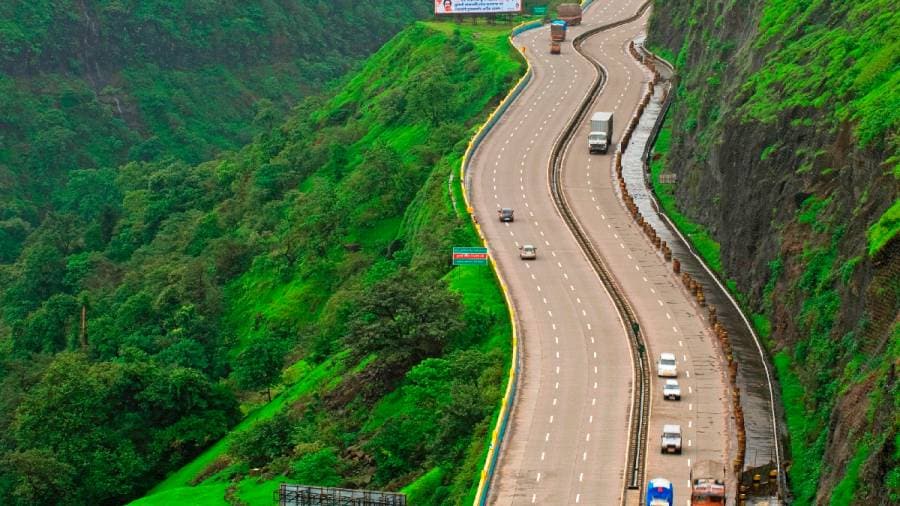 We now have several nice modern expressways in our country.
We now have several nice modern expressways in our country.
After an investigation, Maharashtra State Transport Commissioner Vivek Bhimanwar (IAS) said "Many of these accidents have happened because of distracted driving, which is most likely to happen to drivers travelling long distances on monotonous, straight roadways that have few turns. Accidents have also occurred due to drivers talking over cell phones, or falling asleep, over speeding, lack of fitness of vehicles, worn-out tyres getting burst, etc". An official from Maharashtra State Road Development Corporation (MSRDC) added, "Most of the accidents reported are due to speeding or old vehicles that cannot drive at 120kmph (the official speed limit)."
 But drivers also tend to get distracted, as most expressways are smooth and straight and require them to do little.
But drivers also tend to get distracted, as most expressways are smooth and straight and require them to do little.
Normally, our investigations are highly short of facts. But in this case both the officials have spoken a lot of truth. The transport commissioner has rightly cited distracted driving as one of the causes. Driving long distances at over 3 digit speeds requires full focus on the road. And if the road is straight, wide and without many turns, most drivers in our country tend to get bored and distracted.
 Look closely and you will see many drivers yawning while sitting behind the wheel on expressways. Photo by Sander Sammy on Unsplash.
Look closely and you will see many drivers yawning while sitting behind the wheel on expressways. Photo by Sander Sammy on Unsplash.
Their attention begins to drift and shift from driving to other things. After just a little time on an expressway, the majority start fidgeting and squirming in their seat. They yawn, touch their hair, rub their eyes, etc. They are constantly moving their eyes from the road and their hands off the steering and what is even worse, is that they turn around to look and talk with the other occupants. On straight expressways, there is not much to do for the driver and some of them get so relaxed, that they fall asleep! And this lack of alertness is a definite cause of accidents on our expressways.
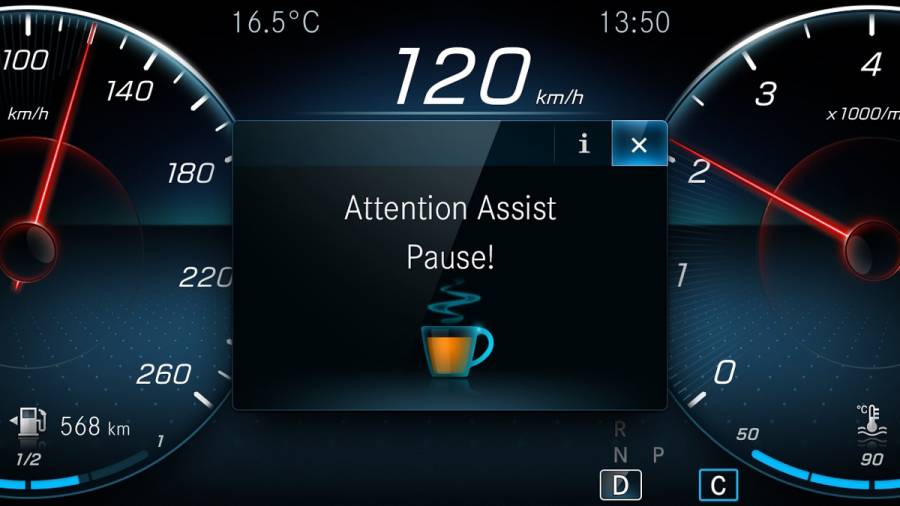 Features like attention assist, which monitor the alertness of a driver, should be made mandatory in all vehicles.
Features like attention assist, which monitor the alertness of a driver, should be made mandatory in all vehicles.
The speeds one can reach on expressways, also results in accidents as our drivers are just not trained or skilled enough to drive safely at high speeds. Several are of course unsafe at any speed. On the autobahns in Germany, you have grandmas safely driving at well over 150 kph with complete confidence. But while we are now getting roads where one can drive at high speeds, we are still very far away from having drivers who can do it safely.
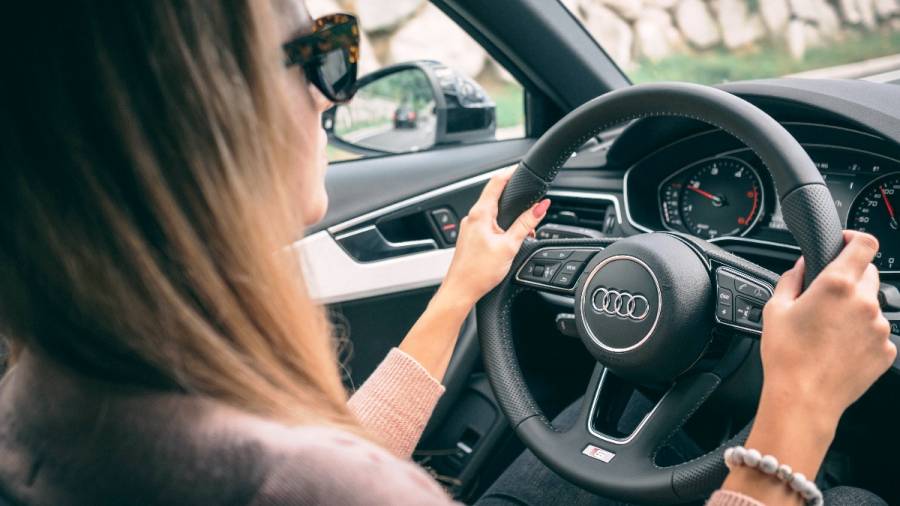 Many Indian drivers don't even know the correct way to hold a steering and few keep both hands on the wheel. This is very essential, especially when driving at high speed. Photo by Andraz Lazic on Unsplash.
Many Indian drivers don't even know the correct way to hold a steering and few keep both hands on the wheel. This is very essential, especially when driving at high speed. Photo by Andraz Lazic on Unsplash.
Indian drivers are the best in the world in congested road conditions where they can masterly cut, swerve, turn and maneuver through every conceivable or even non-existent gap. Their reactions and vehicle control at slow speeds in heavy traffic and on narrow roads is unmatched. But put them on a fast and open road, and most cannot even hold the car in a straight line. Their vehicles wander all over the place and I call such drivers "Bhatakti Aatmas or Wandering Spirits". And given how badly they drive, they surely will soon turn into ghosts.
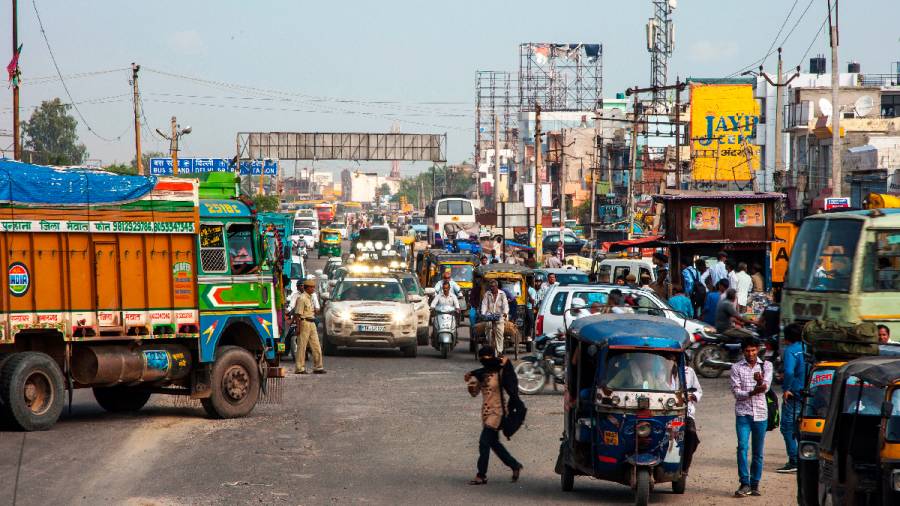 In congested and crowded conditions, we are by far the best drivers and riders in the world. It's almost like we have built in obstacle avoidance radars!
In congested and crowded conditions, we are by far the best drivers and riders in the world. It's almost like we have built in obstacle avoidance radars!
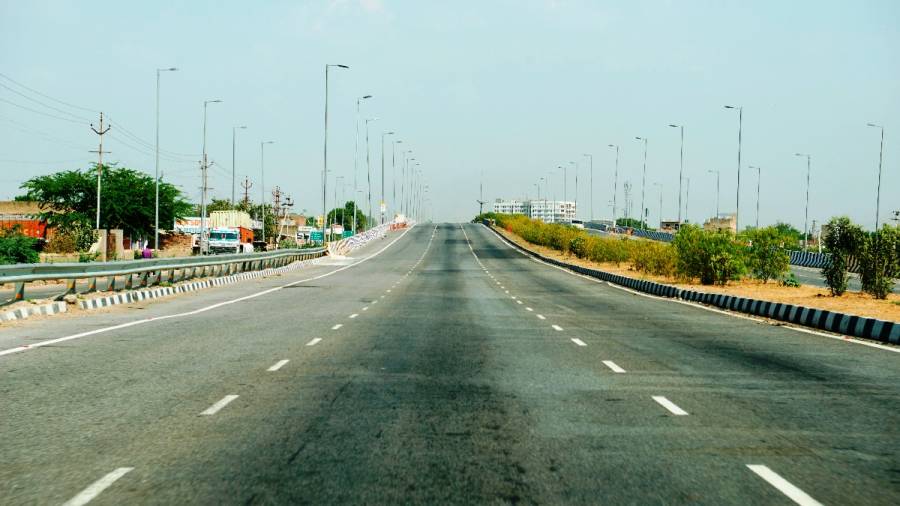 But on open and fast roads, most Indian drivers are incapable of even keeping their vehicle in a straight line.
But on open and fast roads, most Indian drivers are incapable of even keeping their vehicle in a straight line.
The officials are also absolutely correct about use of cell phones while driving and headphones blaring loud music, being the basis for many accidents. I have even seen some morons watching videos on their phones while driving or riding. Then there is the aspect of vehicle fitness and tyre condition. Both are very important on long drives, especially on our fast expressways. The vehicle's body, brakes, suspension, steering, lights, horns, and wipers and so on, all need to be in perfect working order.
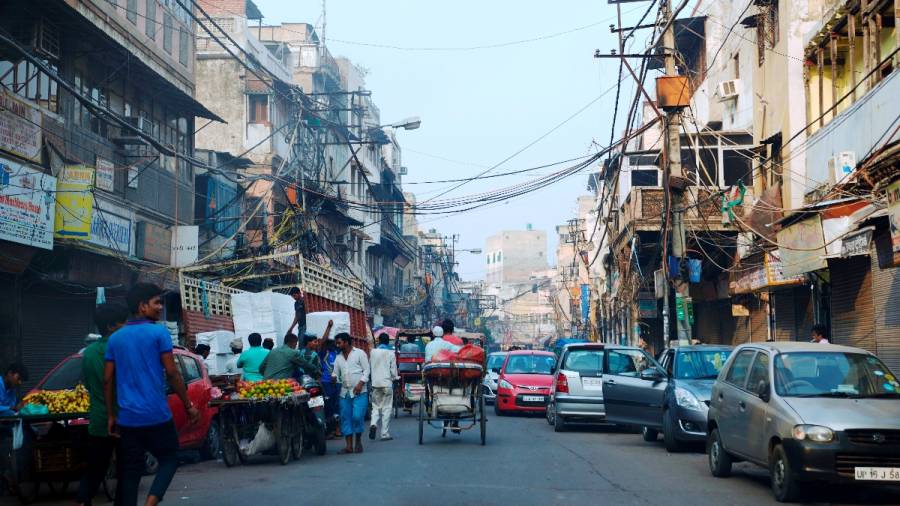 But in narrow streets and traffic jams, we can find and go through gaps as easily as a hot knife slicing through butter.
But in narrow streets and traffic jams, we can find and go through gaps as easily as a hot knife slicing through butter.
The most neglected aspect of course are the tyres, which are the only direct contact between a vehicle and the road. When a tyre rotates, it stresses and flexes resulting in heat build-up. The amount of heat generated depends of course on the air and surface temperature, as well as factors like tyre load, vehicle speed, air pressure, tyre condition and speed rating, and also the road's construction material and surface texture.
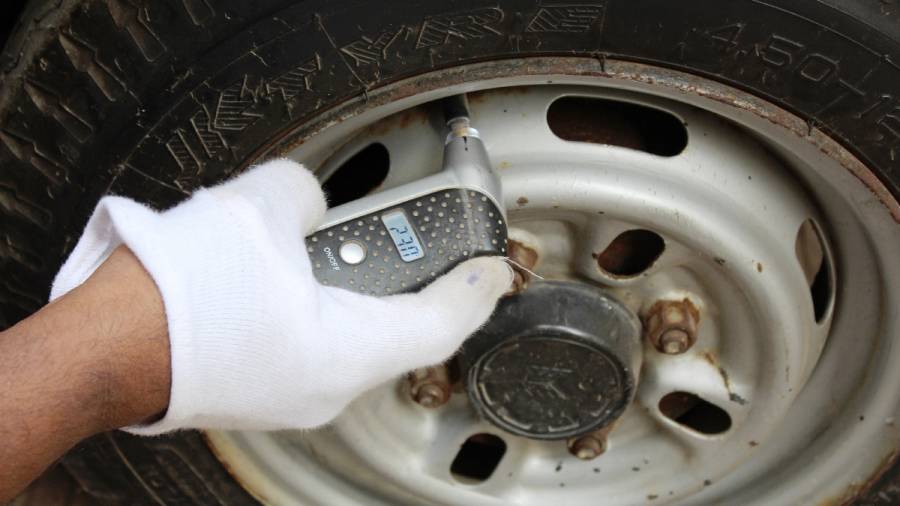 Tyre care, especially the right inflation pressure, is essential for driving on our new expressways.
Tyre care, especially the right inflation pressure, is essential for driving on our new expressways.
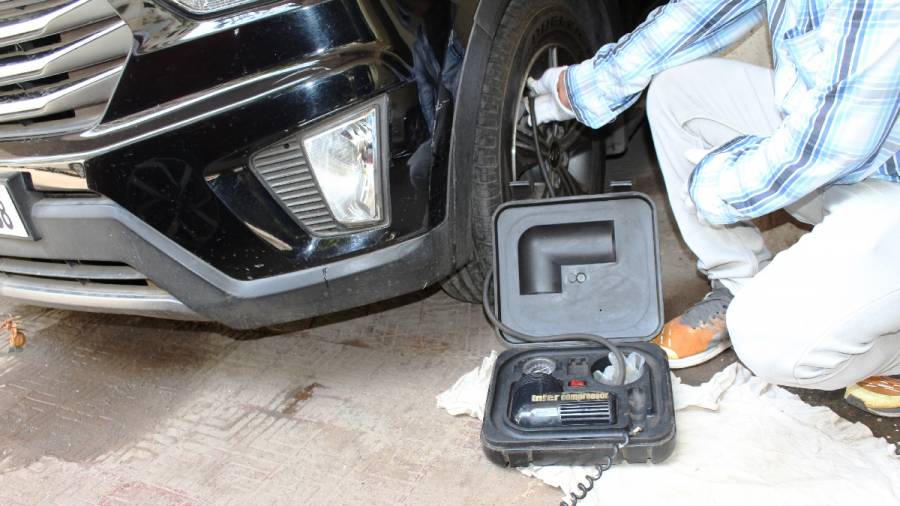 Seasoned motorists also carry portable air compressors as they know the importance of right tyre pressures.
Seasoned motorists also carry portable air compressors as they know the importance of right tyre pressures.
Almost all of our new expressways are made and surfaced with concrete, the biggest advantage of which is their longevity. But concrete roads are not as smooth as bitumen roads and therefore the ride is more bumpy and noisy. There is also more friction that results in faster and higher heat build-up in tyres. The heat build-up makes the tyre softer too and more prone to cuts and punctures, especially if the tyre is old or does not have enough tread depth.
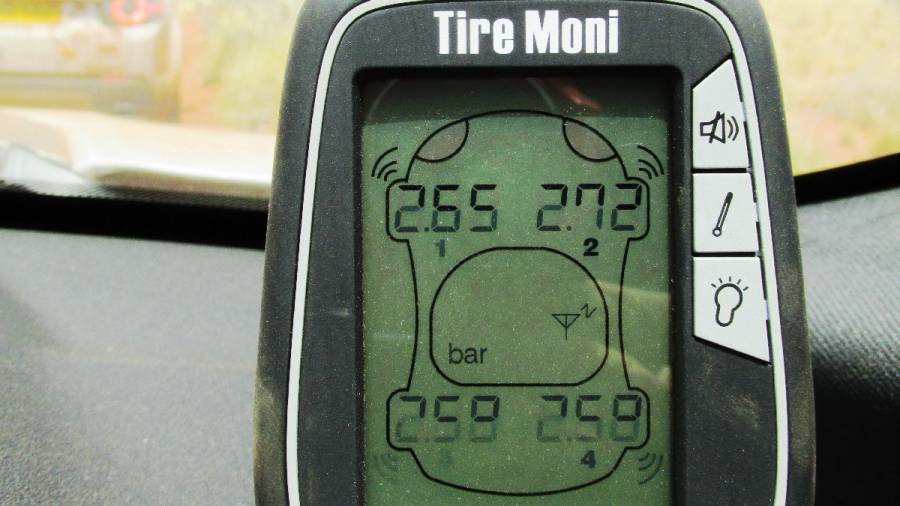 These days many cars come with TPMs or tyre pressure monitors, and they are available as aftermarket accessories too.
These days many cars come with TPMs or tyre pressure monitors, and they are available as aftermarket accessories too.
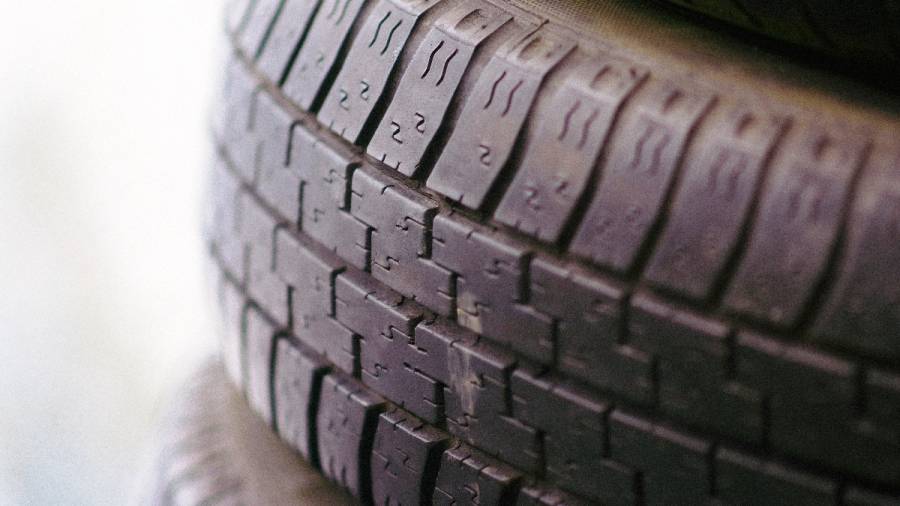 All tyres should have good tread depth and even wear. Photo by Jaye Haych on Unsplash.
All tyres should have good tread depth and even wear. Photo by Jaye Haych on Unsplash.
In India, we have the problem of debris on the road too and if a stone or any other such hard object gets stuck in the tyre, it can also penetrate the rubber and make a cut or puncture, particularly if the tyre is worn and this can result in a blowout or burst. And that is the last thing one wants. So obviously, any vehicle that is driven on our expressways needs top condition tyres. And while retreaded tyres can work on narrow country roads, in my view they are unadvisable on fast expressways. And clear evidence of this is the amount of detached rubber belts shed by tyres that you find lying across most of our expressways.
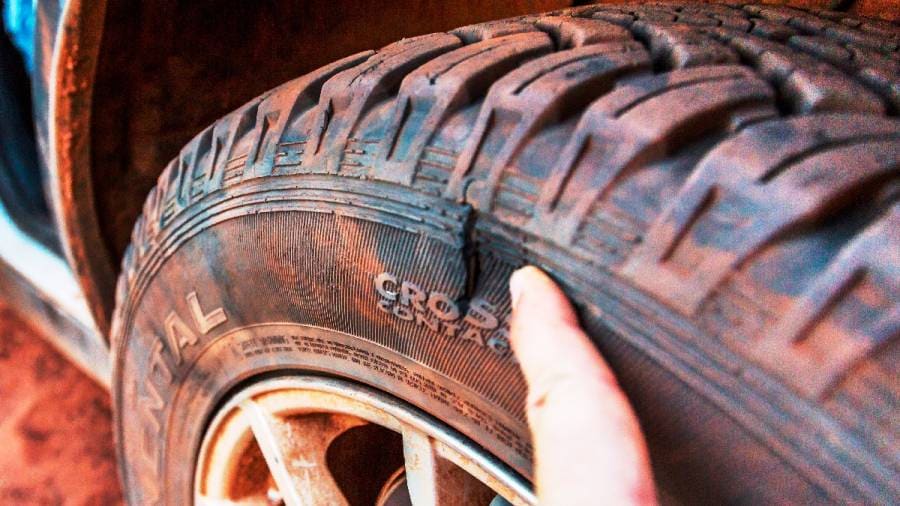 Driving on under inflated tyres or hitting stones and sharp edges of pavements or road dividers, can result in cuts on the sidewall. It can also damage the tyre beyond repair.
Driving on under inflated tyres or hitting stones and sharp edges of pavements or road dividers, can result in cuts on the sidewall. It can also damage the tyre beyond repair.
 Debris is common on our roads and if anything hard or pointed gets attached to the tyre, it can also penetrate the rubber and cause a puncture.
Debris is common on our roads and if anything hard or pointed gets attached to the tyre, it can also penetrate the rubber and cause a puncture.
Given all this, in my opinion every expressway should have tyre plazas where motorists can pull in for an instant tyre and tread check, air, repair or even replacement. There should also be enough signage and warnings educating expressway users about the importance of proper tyres and air pressure. And we should also have highway patrols that if required, can stop a motorist from proceeding ahead if the tyres or vehicle appears unfit and unsafe.
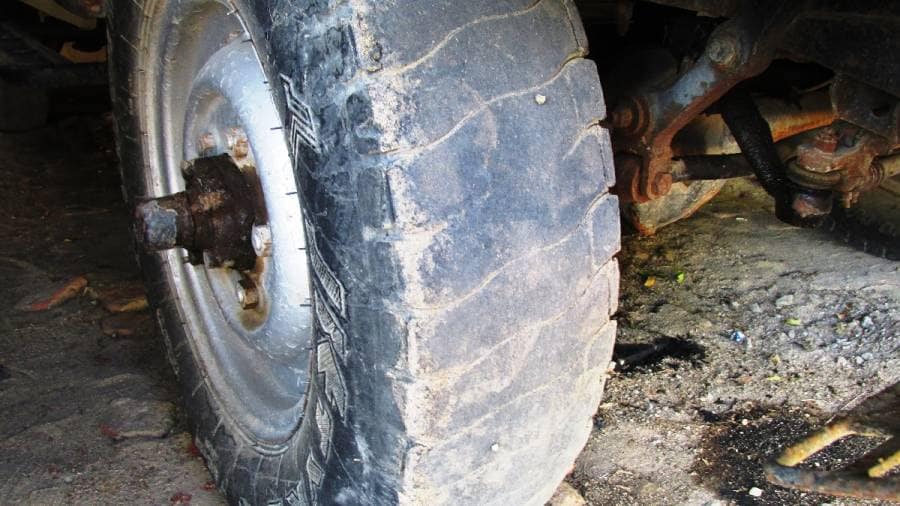 One should not be driving anywhere with such a worn-out tyre.
One should not be driving anywhere with such a worn-out tyre.
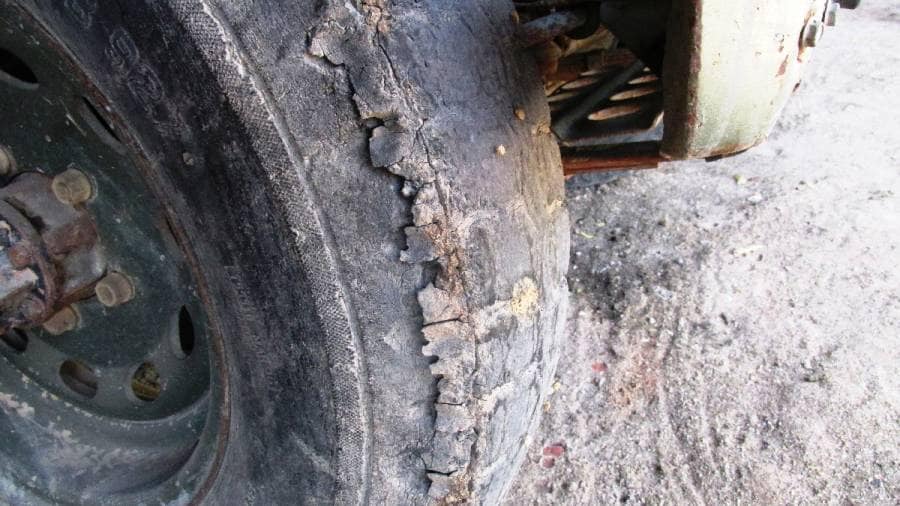 And if you take this one out onto the road, its tread and belt are sure to come off! That is the reason I would not advise retreads on expressways.
And if you take this one out onto the road, its tread and belt are sure to come off! That is the reason I would not advise retreads on expressways.
If one has been continuously driving at high speed, I would also suggest a break every couple of hours to allow the tyres, and driver to cool down. Please avoid overheating of tyres and brains, and drive safely.
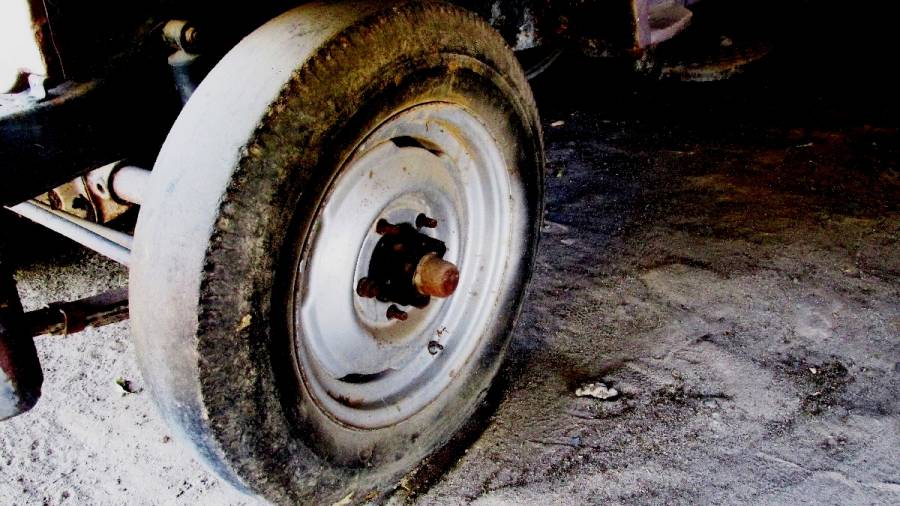 This bald baby should not even be mounted on a wheel. And by no stretch of imagination is it a racing slick!
This bald baby should not even be mounted on a wheel. And by no stretch of imagination is it a racing slick!
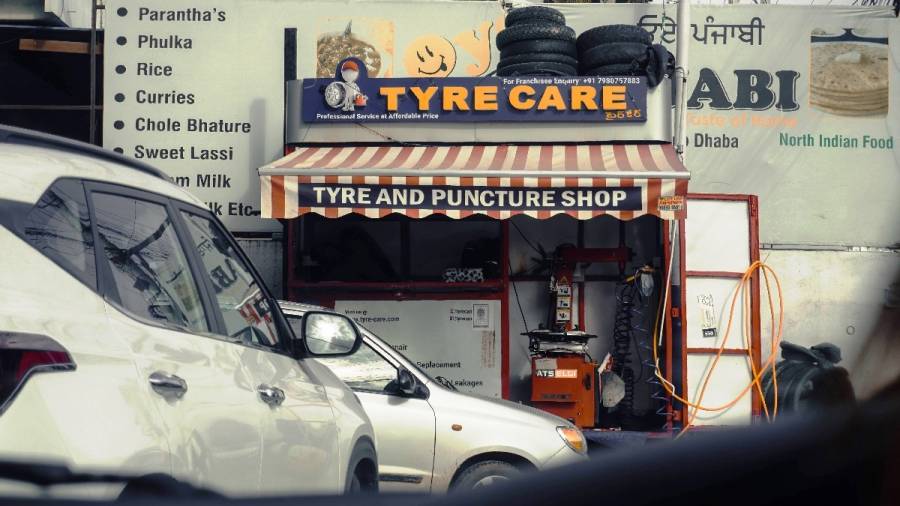 In my view, at the start of every expressway there should be tyre plazas and tyre care service centers. Photo by Aboody on Unsplash.
In my view, at the start of every expressway there should be tyre plazas and tyre care service centers. Photo by Aboody on Unsplash.












